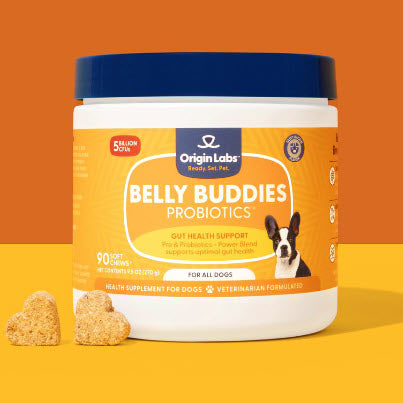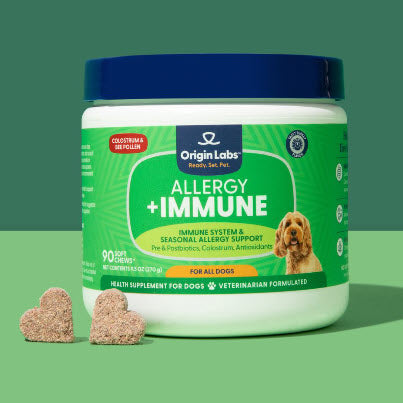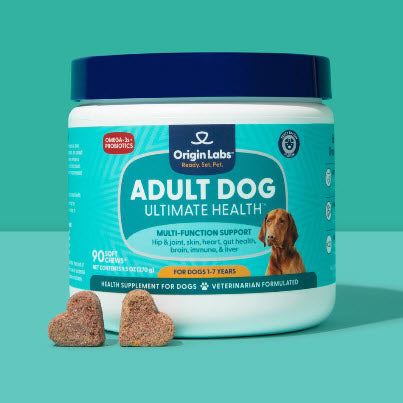Introduction
Can dogs eat ground beef? The short answer is yes. Ground beef, when properly prepared, can be a beneficial addition to your dog's diet. However, just like any other food item, it should be incorporated thoughtfully and responsibly.
Ground beef serves as a rich source of protein and essential nutrients for dogs. It can boost their energy levels and promote muscle growth and repair. But while it's nutritious, there are key considerations before including it in your dog's meals:
- Quality: Not all ground beef is created equal. The nutritional value largely depends on the quality of the meat used. Grass-fed and organic options free from antibiotics and hormones are preferable.
- Preparation: How the ground beef is cooked can affect its nutritional value and its safety for canine consumption.
- Quantity: The amount of ground beef included in your dog's diet should be proportionate to their size, age, and overall health status.
These points will guide us as we explore further incorporating ground beef into your dog's diet in a way that prioritizes their health and well-being.
The Nutritional Value of Ground Beef for Dogs
Ground beef can be an excellent source of nutrition for dogs, adding valuable components to their diet. It’s crucial to understand the nutritional benefits of ground beef for dogs to ensure they receive a well-rounded diet. Here are some aspects to consider:
1. Protein
Essential for building and repairing muscles, protein is a cornerstone of canine health. Ground beef is rich in this macronutrient, aiding in your dog's growth and maintenance needs.
2. Amino Acids
These compounds are the building blocks of protein. Dogs need various amino acids that their bodies cannot produce, making ground beef a beneficial inclusion for its amino acid profile.
3. Fatty Acids
While often misunderstood, fats are vital for dogs, providing energy and supporting cell function. Ground beef contains essential fatty acids that contribute to a shiny coat and healthy skin.
4. Minerals
Zinc, iron, phosphorus, and other minerals found in ground beef play critical roles in canine health by supporting immune function and bone health.
Including ground beef as part of a carefully measured feeding regimen can offer these essential nutrients dogs require. When selecting ground beef for your pet's diet, lean cuts are generally preferable to minimize excess intake of saturated fats while still providing the necessary dietary benefits.
Is It Safe to Feed Dogs Raw Ground Beef?
Many pet owners wonder if it's okay to give their dogs raw ground beef. While raw diets for dogs have become popular, it's important to think about the possible risks versus the nutritional benefits. Some significant concerns cannot be ignored.
Risks of Feeding Raw Meat to Dogs:
Feeding dogs raw ground beef can be dangerous because:
- Bacterial Contamination: Raw meat, including ground beef, can contain harmful bacteria like Salmonella, E. coli, and Listeria. These bacteria can make both pets and humans sick if they come into contact with the raw food or its juices. Dogs who eat contaminated meat may experience symptoms such as vomiting, diarrhea, fever, and lethargy.
- Parasites: Raw ground beef might also harbor parasites that can cause health problems in dogs. This is another risk to consider before adding raw beef to your dog's diet.
It's crucial to prioritize your dog's well-being by understanding and evaluating these potential dangers associated with feeding them raw ground beef.
Safer Alternatives:
If you still want to include ground beef in your dog's meals while reducing the risks mentioned above, here are some safer alternatives:
- Cooking Ground Beef: Fully cooking the ground beef will kill any harmful bacteria or parasites present. Make sure not to add any seasonings or oils that could upset your dog's stomach.
- Commercially Prepared Raw Diets: Some pet food companies offer pre-packaged raw diets that are specially formulated to be safe from bacterial contamination and nutritionally balanced.
- Freezing: Freezing raw meat at temperatures below -20°C (-4°F) for a minimum of three days may help decrease the chances of certain parasites surviving. However, please note that freezing does not eliminate all bacterial risks.
When deciding how to include ground beef in your dog's diet, it's essential to find a balance between their safety and nutritional requirements. As responsible pet owners, we must be cautious and consider these alternatives instead of directly feeding our dogs raw ground beef.
As pet parents continue to explore dietary options for their furry companions, understanding how to safely incorporate different foods becomes essential. The next section will further delve into guidelines and considerations for portioning out ground beef meals effectively.
Feeding Ground Beef to Your Dog: Considerations and Guidelines
When you want to add ground beef to your dog's diet, it's important to know how much is appropriate. Portion control for dogs is key to giving them the right nutrients without overfeeding.
How Much Ground Beef Should You Give Your Dog?
Here are some guidelines on the appropriate amount of ground beef based on your dog's size and nutritional needs:
- Small Dogs (Under 20 lbs): Start with a tablespoon of cooked, lean ground beef mixed into their regular food.
- Medium Dogs (20-50 lbs): Give them about 1/4 to 1/3 of a pound of cooked ground beef per day, divided between meals.
- Large Dogs (Over 50 lbs): They may need up to 1/2 pound or more of cooked ground beef daily. Adjust this amount based on their activity level and specific nutritional requirements.
How to Include Ground Beef in Your Dog's Diet
Adding ground beef to your dog's meals requires balance. It's not just about the quantity, but also the quality and combination with other foods.
Here are some tips for balancing ground beef in your dog's diet:
- Choose Lean Cuts: Opt for lean ground beef to avoid giving your dog too much fat, which can lead to obesity or pancreatitis.
- Add Vegetables: Mix in some dog-friendly vegetables like carrots or green beans with the ground beef. This adds fiber and essential nutrients to their meal.
- Include Grains: Give them easily digestible grains such as rice or oats for carbohydrates that provide energy.
- Keep It Plain: Cook the ground beef plain, without any seasonings or oils that could be harmful to your dog.
By following these guidelines and tips for portioning out ground beef meals, you can ensure that your dog gets the goodness of this protein-rich food while maintaining a balanced diet. Remember to adjust the portions based on your dog's individual needs and consult with a veterinarian if you're unsure about the best dietary choices for your pet.
Cooking Ground Beef for Dogs
When preparing ground beef for your dog, it's important to prioritize food safety. Thoroughly cooking the meat is crucial to eliminate harmful bacteria and potential pathogens that can cause serious health issues in dogs.
Ensuring Safety Through Thorough Cooking
- Heat ground beef to an internal temperature of at least 165°F (74°C), using a meat thermometer to check accuracy.
- Cook until there's no pink meat visible and juices run clear, which indicates the meat is properly cooked.
Choosing Safe Cooking Methods
Choosing the right cooking method can make all the difference when preparing ground beef for dogs. Here are some safe techniques:
Boiling Ground Beef
- Place ground beef in a pot and cover with water.
- Bring to a boil and simmer, ensuring it cooks evenly.
- Drain excess fat after cooking, as too much fat can upset your dog's stomach.
Lightly Sautéing Ground Beef
- Use a non-stick pan without adding oil or butter, since these can add unnecessary fats.
- Keep the heat medium-high to cook the beef quickly and uniformly, stirring frequently.
Avoiding Seasonings and Onions/Garlic
It's crucial to cook ground beef without any added seasoning or ingredients like onions and garlic that are toxic to dogs. Stick to plain ground beef to avoid any health complications.
Storing Cooked Ground Beef
After cooking:
- Let the meat cool down before offering it to your dog.
- Store leftovers in an airtight container in the refrigerator for up to three days.
By following these guidelines when cooking ground beef for dogs, you're taking important steps towards ensuring their health and safety. Cooking not only makes the meat safer but also more digestible for your furry friend. Remember, even with properly cooked ground beef, moderation is key; make sure it's only part of a well-balanced diet tailored to your dog’s specific needs.
Choosing High-Quality Ground Beef for Your Dog
As a responsible pet owner, it's important to prioritize the quality of your dog's food. When it comes to ground beef for dogs, remember to choose grass-fed or organic ground beef. These types of beef are usually free from antibiotics and hormones, making them a healthier choice for your furry friend.
Why Grass-Fed Beef?
Grass-fed beef is not just a trendy term in the culinary world. It also offers significant benefits for our four-legged friends:
- Higher Nutrient Content: Grass-fed beef often contains more essential vitamins like Vitamin E and B vitamins. It also has higher levels of Omega-3 fatty acids, which are good for dogs' heart health.
- Lower Fat Content: Compared to grain-fed varieties, grass-fed beef tends to have less fat and more lean meat. This makes it a better option for maintaining your dog’s weight.
- No Antibiotics or Hormones: Grass-fed cattle are typically raised without the use of antibiotics or growth hormones, both of which can have negative effects on your dog's health in the long term.
How to Find High-Quality Ground Beef
With numerous options to choose from, finding reliable sources of ground beef can feel overwhelming. Here are some tips to help you out:
- Check Labels: Look for labels that certify the beef as 'grass-fed', 'organic', or 'antibiotic-free'. Trustworthy brands will clearly display these labels.
- Local Butchers and Farmers Markets: Buying meat from local sources often means getting fresher and higher-quality products. It's also a great way to support small businesses in your community!
- Online Meat Delivery Services: If you prefer the convenience of online shopping, several platforms offer high-quality, ethically sourced meats delivered straight to your doorstep. Some popular options include Crowd Cow and ButcherBox.
Remember that while ground beef can be a nutritious part of your dog's diet, it should be balanced with other food groups and not given in excess. In the next section, we'll explore different types of lean protein options that you can incorporate into your dog's meals.
Variety is Key: Other Lean Protein Options for Dogs
When it comes to providing a balanced diet for your canine companion, incorporating a variety of lean proteins is essential. While ground beef offers valuable nutrients, diversifying protein sources can enhance your dog's overall health and cater to their individual dietary needs.
Lean Meats for Canine Diets
Beyond ground beef, several lean meats can serve as excellent sources of protein for dogs:
- Chicken: Often recommended by veterinarians, chicken is a highly digestible protein source that's low in fat. It contains vitamins and minerals such as B vitamins, which support energy levels and overall metabolic health.
- Turkey: Similar to chicken, turkey is another poultry option that's low in fat while being rich in protein. Its nutrient profile includes selenium and tryptophan, which are beneficial for immune system support and mood regulation.
- Fish: Fish provides omega-3 fatty acids along with protein, promoting heart health, joint mobility, and a shiny coat. Salmon and sardines are particularly good choices; however, ensure they are cooked thoroughly and deboned before offering them to your dog.
Plant-Based Proteins: Alternatives for Special Diets
For dogs with specific dietary restrictions or preferences, plant-based proteins can be part of their diet:
- Lentils: Lentils are not only a good source of protein but also provide fiber, iron, and complex carbohydrates. They can help maintain energy levels and support digestive health.
- Quinoa: Often considered a superfood, quinoa is another plant-based option that contains all nine essential amino acids making it a complete protein. It's also gluten-free and packed with vitamins and minerals.
Preparing Plant-Based Proteins
When introducing plant-based proteins like lentils or quinoa into your dog's diet, it's important to cook them properly to aid digestion. Here are some tips:
- Rinse lentils thoroughly before cooking to remove any impurities.
- Cook quinoa according to package instructions until it's fluffy and the grains have sprouted tails.
- Always serve these proteins plain without any added seasonings or sauces that may be harmful to dogs.
Integrating Protein Variations into Meals
To integrate these alternative protein sources into your dog's meals effectively:
- Start with small portions to assess tolerance and prevent gastrointestinal upset.
- Combine lean proteins with vegetables like carrots or leafy greens for added fiber and nutrients.
- If using plant-based proteins, complement them with animal-based proteins for a more comprehensive amino acid profile unless otherwise directed by a veterinarian.
Customizing Your Dog’s Diet
Every dog is unique; hence their dietary requirements will vary based on factors such as age, activity level, and individual health concerns. Customizing the diet to meet these needs is crucial:
- Active dogs may require more animal-based proteins for sustained energy.
- Senior dogs might benefit from the inclusion of easily digestible proteins like chicken or turkey.
- Dogs with allergies or sensitivities may thrive on hypoallergenic options such as fish or novel proteins they haven't been exposed to before.
Note: When making any changes to your dog’s diet, it’s advisable to do so gradually and under the guidance of a veterinarian.
By incorporating various lean proteins into your dog’s diet—whether animal or plant-based—you not only provide an array of nutrients but also keep mealtime interesting for your furry friend. Just as humans enjoy variety in their meals, so do dogs benefit from an assortment of wholesome foods tailored to support their well-being.
Incorporating Ground Beef Safely into Your Dog's Diet
When it comes to adding ground beef to your dog's diet, the most important thing is their health and well-being. Can dogs eat ground beef? Yes, they can, but it’s not just about adding new items to their food bowl; it’s about doing so responsibly.
Key Aspects to Remember:
- Quality Sourcing: Choose ground beef that is locally sourced, grass-fed, and free from antibiotics or hormones.
- Proper Preparation: Cook ground beef thoroughly without any added seasonings to prevent any health risks.
- Balanced Serving: Combine ground beef with other nutritious foods, ensuring your dog gets a well-rounded meal.
A healthy diet for your canine friend involves more than just the right ingredients; it includes understanding the portions and preparations that best suit their individual needs. Dogs thrive when their meals are tailored to their specific dietary requirements.
For personalized dietary advice that will benefit your pet the most, reaching out to a veterinarian is a wise step. They can provide insights into how much ground beef is appropriate for your dog's size and breed, taking into account their activity level and overall health.
Prioritizing your dog's diet means prioritizing their health. By choosing the best ground beef and incorporating it safely into their meals, you're ensuring that your furry companion enjoys both delicious and nutritious dining experiences.
FAQs (Frequently Asked Questions)
Can dogs eat ground beef?
Dogs can eat ground beef in moderation as part of a balanced diet. It is important to ensure that the ground beef is lean and cooked thoroughly to eliminate potential pathogens before serving it to your dog.
What are the nutritional benefits of ground beef for dogs?
Ground beef can provide essential nutrients for dogs, including protein, amino acids, fatty acids, and minerals. These nutrients are important for maintaining a dog's overall health and well-being.
Is it safe to feed dogs raw ground beef?
Feeding dogs raw ground beef poses potential dangers, such as bacterial contamination. It is recommended to cook ground beef thoroughly before serving it to your dog or consider safer alternatives for incorporating it into their diet.
How much ground beef should I feed my dog?
The appropriate amount of ground beef to feed your dog depends on their size and nutritional needs. It is essential to practice portion control and balance ground beef with other ingredients for a well-rounded diet.
How should I cook ground beef for my dog?
Ground beef should be cooked thoroughly to eliminate potential pathogens before serving it to your dog. Safe cooking methods include boiling or lightly sautéing the ground beef for canine consumption.
What are some high-quality options for sourcing ground beef for my dog?
Opting for grass-fed or organic ground beef that is free from antibiotics and hormones can be beneficial for your dog's health. It is important to find trusted sources of high-quality ground beef for your dog's meals.
What are some alternative protein sources for dogs aside from ground beef?
In addition to ground beef, other lean protein options can diversify your dog's diet, such as chicken, turkey, lentils, and quinoa. These alternative protein sources can be suitable for dogs with dietary restrictions or preferences.
How can I incorporate ground beef safely into my dog's diet?
When incorporating ground beef into your dog's diet, it is crucial to prioritize their health and well-being by sourcing high-quality meat, cooking it thoroughly, and consulting with a veterinarian for personalized dietary advice.








